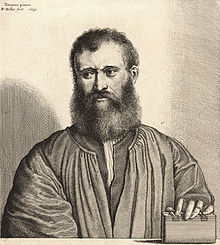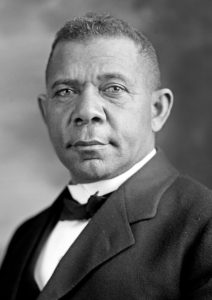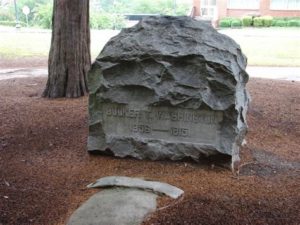 On this day in 1556, Florentine poet, writer on etiquette and society, diplomat, and inquisitor, Giovanni della Casa died probably in the Farnese palace in Rome at the age of 53. Born 28 June 1503 in Florence or Borgo San Lorenzo. He is celebrated for his famous treatise on polite behavior, Il Galateo overo de’ costumi (1558). From the time of its publication, this courtesy book has enjoyed success and influence. In the eighteenth century, critic Giuseppe Baretti wrote in The Italian Library (1757), “The little treatise is looked upon by many Italians as the most elegant thing, as to stile, that we have in our language.”
On this day in 1556, Florentine poet, writer on etiquette and society, diplomat, and inquisitor, Giovanni della Casa died probably in the Farnese palace in Rome at the age of 53. Born 28 June 1503 in Florence or Borgo San Lorenzo. He is celebrated for his famous treatise on polite behavior, Il Galateo overo de’ costumi (1558). From the time of its publication, this courtesy book has enjoyed success and influence. In the eighteenth century, critic Giuseppe Baretti wrote in The Italian Library (1757), “The little treatise is looked upon by many Italians as the most elegant thing, as to stile, that we have in our language.”
 The Final Footprint – Casa is entombed in the Church of Sant’Andrea della Valle, Rome. Sant’Andrea della Valle is a minor basilica in the rione of Sant’Eustachio. The basilica is the general seat for the religious order of the Theatines. It is located at Piazza Vidoni, 6 at the intersection of Corso Vittorio Emanuele (facing facade) and Corso Rinascimento.
The Final Footprint – Casa is entombed in the Church of Sant’Andrea della Valle, Rome. Sant’Andrea della Valle is a minor basilica in the rione of Sant’Eustachio. The basilica is the general seat for the religious order of the Theatines. It is located at Piazza Vidoni, 6 at the intersection of Corso Vittorio Emanuele (facing facade) and Corso Rinascimento.
#RIP #OTD in 1844 French-Peruvian writer and socialist activist who made important contributions to early feminist theory, Paul Gauguin’s grandmother, Flora Tristan died aged 41. Cimetière de la Chartreuse, Bordeaux, France
 On this day in 1915, educator, author, orator, and advisor to presidents of the United States, Booker T. Washington died in Tuskegee,
On this day in 1915, educator, author, orator, and advisor to presidents of the United States, Booker T. Washington died in Tuskegee,
Alabama at the age of 59. Born Booker Taliaferro Washington c. 1856 in Hale’s Ford, Virginia. Between 1890 and 1915, Washington was the dominant leader in the African-American community.
Washington was from the last generation of black American leaders born into slavery and became the leading voice of the former slaves and their descendants. They were newly oppressed in the South by disenfranchisement and the Jim Crow discriminatory laws enacted in the post-Reconstruction Southern states in the late 19th and early 20th centuries.
Washington was a key proponent of African-American businesses and one of the founders of the National Negro Business League. His base was the Tuskegee Institute, a historically black college in Alabama. As lynchings in the South reached a peak in 1895, Washington gave a speech, known as the “Atlanta compromise”, which brought him national fame. He called for black progress through education and entrepreneurship, rather than trying to challenge directly the Jim Crow segregation and the disenfranchisement of black voters in the South. Washington mobilized a nationwide coalition of middle-class blacks, church leaders, and white philanthropists and politicians, with a long-term goal of building the community’s economic strength and pride by a focus on self-help and schooling. But, secretly, he also supported court challenges to segregation and restrictions on voter registration, passing on funds to the NAACP for this purpose. Black militants in the North, led by W. E. B. Du Bois, at first supported the Atlanta compromise but after 1909, they set up the NAACP to work for political change. They tried with limited success to challenge Washington’s political machine for leadership in the black community but also built wider networks among white allies in the North.[2]Decades after Washington’s death in 1915, the civil rights movement of the 1950s took a more active and militant approach, which was also based on new grassroots organizations based in the South, such as CORE, SNCC and SCLC.
Washington mastered the nuances of the political arena in the late 19th century, which enabled him to manipulate the media, raise money, develop strategy, network, push, reward friends, and distribute funds. His long-term goal was to end the disenfranchisement of the vast majority of African Americans, who then still lived in the South.
Washington was married three times. In his autobiography Up from Slavery, he gave all three of his wives credit for their contributions at Tuskegee. His first wife Fannie N. Smith was from Malden, West Virginia, the same Kanawha River Valley town where Washington had lived from age nine to sixteen. He maintained ties there all his life, and Smith was a student of his when he taught in Malden. He helped her gain entrance into the Hampton Institute. Washington and Smith were married in the summer of 1882. Fannie died in May 1884.
In 1885 the widower Washington married again, to Olivia A. Davidson (1854-1889). Born free in Virginia to a free woman of color and a father who had been freed from slavery, she moved with her family to the free state of Ohio, where she attended common schools. She later studied at Hampton Institute and the Massachusetts State Normal School at Framingham. She taught in Mississippi and Tennessee before going to Tuskegee to work as a teacher. Washington recruited Davidson to Tuskegee, and promoted her to vice-principal. She died in 1889.
In 1893 Washington married Margaret James Murray. She was from Mississippi and had graduated from Fisk University, a historically black college. Murray outlived Washington and died in 1925.
 The Final Footprint
The Final Footprint
Have you planned yours yet?
Follow TFF on twitter @RIPTFF


